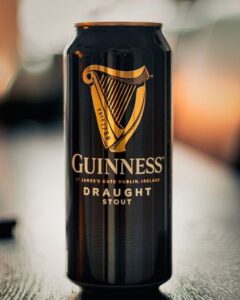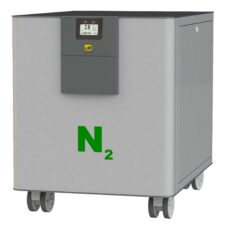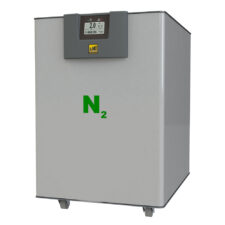Will you be celebrating St Patrick’s Day with a Guinness this year? This unique, malty beer was the world’s first nitro beer – thanks to mathematician – turned – brewer, Michael Ash, who joined the Guinness team back in 1951.

This brewing legend was determined be able to serve Guinness in draft format and was convinced that adding nitrogen to the beer was best way to achieve this, but also that it would also transform the beer itself.
Let’s start from the beginning though…
The founder of the company, Arthur Guinness, made the bold decision in 1799 to stop brewing ale and start his journey on perfecting the rich and bold beauty of “porter” – a dark beer originally found in London where it was popular with the city’s street and river porters (hence the name). In 1803 Arthur’s son, Arthur Guinness II, takes over the reigns of the company after his fathers death. He details the precise instructions for the brewing of their beer in 1921 and the company continues production according to these until his son, Sir Benjamin Lee Guinness, takes the helm in 1850. Under his guidance things begin to develop in earnest.
Bring on the science
As a company, from the late 1800s Guinness turned to science to advance their brewing methods. In 1893 they hired their first university science graduate, Thomas Bennett Case. In 1901 he was joined by a second scientist, Alexander Forbes-Watson, who set up the first Guinness Research Laboratory.
By 1959, Ash’s ‘Easy Serve’ system had created the ‘surge and settle’ effect that draught Guinness is now famous for, and with it, the world’s first nitro beer. In 1988 their scientists invented the “rocket widget” which nitrogenates canned Guinness, thus retaining it’s smooth and creamy taste previously only possible on draught.

Let’s look at the production methods of Guinness
Barley grains are malted and form the basis of the beer. This is carefully crushed then mixed with heated water from Poulaphouca Lake in County Wicklow (Ireland). The mixture is mashed to extract the brewing sugars before dropping down in to a kieve (or a mash tun) that separates the grain out from the liquid (known as ‘sweet wort’).

As with any chemical reaction, temperature control is key. By roasting the barley to precisely 232 oC Guinness achieves its rich and distinctive taste and that dark hue. If this temperature isn’t reached the full flavour isn’t achieved but overstep and go hotter and the barley catches fire. (Ever forgotten to correctly set your hotplate up and overheated something? Potential disaster…). The brewers then add hops, boiling the sweet wort for a full 90 minutes before leaving it to cool and settle.
After this a new ingredient comes in to play. The revered Guinness yeast is a strain which has quite literally been handed down from generation to generation. This ensures the beer is perfectly fermented and recognisable for its distinctive flavour. Once added the beer gets to rest.
Then comes the nitrogen – the part you were waiting for! The innovative work of Michael Ash adds something special to this draught beer, creating that unique surge and settle phenomenon and the iconic rich and creamy head. Once the nitrogen has been added to pressurise the beer there’s apparently a ‘head height test’ to make absolutely sure that there are the correct ratio of bubbles in every pint of this unique elixir. They tell us that this is approximately 3,000,000!

For those of you that have a nitrogen gas generator in your lab, please don’t start using it on your home brew – no matter how much you love Guinness and fancy making your own nitro beer!
Worldwide curiosity
This “surge and settle” process has captured the imagination of many scientists around the world. Not least, researchers at Osaka University (Japan) who carried out work on the following topic:
Guinness beer, a dark stout beer, is pressurized with nitrogen gas. When poured Guinness beer into a pint glass, small-diameter bubbles (only 1/10 the size of those in carbonated drinks such as soda and carbonated water) disperse throughout the entire glass and the texture motion of the bubble swarm moves downwards.
“Mystery of texture of Guinness beer: inclination angle of a pint glass is key to solution: Bubble cascade in beer is found to be analogous to roll waves observed in water sliding downhill on a rainy day.”
It all sounds rather romantic, doesn’t it? I bet you won’t be thinking about the science when you’re sinking your first pint of Guinness on St Patrick’s Day though…
Just for fun:
Happy St Patrick’s Day wishes from the Asynt team.
References: Guinness "Our Story" I Osaka University study







